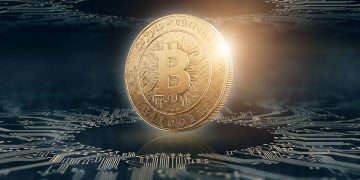Introduction: The Inflation Crisis – A Growing Global Challenge
As the world continues to recover from the disruptions caused by the COVID-19 pandemic, a new and persistent challenge has emerged: rising inflation. What initially seemed like a temporary spike in prices has now become a more ingrained issue, with inflation rates reaching multi-decade highs in many regions. Central banks, once focused on stimulating growth during the pandemic, are now facing a stark reality: how to manage inflation while navigating significant economic uncertainty.
The global inflationary surge has been fueled by a complex mix of factors, including supply chain disruptions, rising energy prices, labor shortages, and high consumer demand as economies open up. At the same time, monetary stimulus from central banks during the pandemic has added to inflationary pressures, leading to an uncomfortable balancing act for policymakers.
In this article, we will explore how inflationary pressures are impacting economies around the world, why central banks face such a difficult task in combating inflation, and how they are likely to respond. Finally, we will assess the potential outcomes of these policy decisions for the global economy and investors alike.
Chapter 1: The Global Inflation Surge – Understanding the Root Causes
Inflation, defined as the rate at which the general level of prices for goods and services rises, has been on the rise globally. The causes of this inflation surge are multifaceted, and understanding them is key to grasping why central banks are finding it so difficult to control.
1.1 Supply Chain Disruptions
The COVID-19 pandemic caused widespread disruptions to global supply chains, which are still being felt today. Factory closures, labor shortages, shipping delays, and disruptions in production have created significant bottlenecks. As demand surged in many sectors, these supply constraints led to higher prices for goods, particularly in industries like electronics, automobiles, and construction materials.
For instance, semiconductor shortages have slowed car manufacturing, pushing up prices for new and used vehicles. Similarly, global shipping delays have caused shortages of everything from raw materials to consumer electronics, exacerbating inflation.
1.2 Energy Prices and Geopolitical Tensions
Energy prices have played a central role in driving inflation. The Russia-Ukraine conflict has exacerbated energy price increases, particularly in Europe. The war has caused disruptions in the supply of natural gas and oil, pushing energy prices to record highs. High energy prices not only increase direct costs for consumers but also raise production costs across industries, further contributing to inflation.
In addition to direct impacts, there are broader geopolitical risks that affect global trade and economic stability, such as supply interruptions, sanctions, and uncertainty surrounding energy markets.
1.3 Rising Wages and Labor Market Tightness
As economies have reopened, labor markets in many countries have struggled to return to pre-pandemic levels of employment. A combination of factors, including ongoing health concerns, early retirements, and a mismatch between job vacancies and available workers, has created a situation where demand for labor outstrips supply in many sectors.
This has led to wage inflation, particularly in the service sector, as businesses try to attract and retain workers. Rising wages are not only an indicator of economic recovery but also a contributor to inflation as businesses pass on the higher labor costs to consumers in the form of price increases.
1.4 Expansionary Monetary Policies and Fiscal Stimulus
To counter the economic downturn caused by the pandemic, central banks implemented expansionary monetary policies. These policies included lowering interest rates and engaging in large-scale quantitative easing (QE), which involved purchasing government bonds and other assets to inject liquidity into the economy. While these measures helped stabilize markets during the crisis, they also fueled demand in an economy already experiencing supply-side disruptions.
Simultaneously, governments around the world deployed fiscal stimulus packages, providing direct payments to households and subsidies to businesses. This further increased consumer demand, which, coupled with supply chain constraints, helped drive inflation.
Chapter 2: Central Banks’ Response to Inflation – Tightening the Monetary Reins
As inflation continues to surge, central banks have been forced to adjust their monetary policies. In particular, they are moving away from the accommodative policies that dominated the pandemic era and are increasingly focused on controlling inflation through tightening measures.
2.1 The U.S. Federal Reserve: Leading the Charge
The U.S. Federal Reserve (Fed) has been one of the most aggressive central banks in responding to rising inflation. The Fed’s Federal Open Market Committee (FOMC) has raised interest rates multiple times in 2022 and signaled more rate hikes in the future. These rate hikes are aimed at cooling down the economy by making borrowing more expensive, which in turn reduces spending and investment.
Additionally, the Fed has begun the process of quantitative tightening (QT)—a reversal of its previous bond-buying policies. By reducing its balance sheet, the Fed is attempting to reduce liquidity in the economy, which should put downward pressure on inflationary expectations.
While these actions are necessary to address inflation, they come with significant risks. Higher interest rates could slow down economic growth, raise unemployment, and potentially lead to a recession. The Fed must therefore carefully calibrate its policies to avoid stifling growth while still keeping inflation in check.
2.2 The European Central Bank: Caught in a Delicate Balancing Act
The European Central Bank (ECB) faces a similar dilemma. Although inflation in the eurozone has surged, the ECB has been slower than the Fed to raise rates due to the region’s fragile economic recovery. The eurozone is facing particularly acute challenges, including high energy costs (thanks to Russia’s invasion of Ukraine) and an economy that is still heavily reliant on fiscal stimulus and government support.
In response to inflation, the ECB has indicated that it will begin tightening monetary policy in 2023. However, the ECB must also be mindful of the potential impact of higher rates on debt-laden European countries, particularly in the southern part of the region (e.g., Italy and Greece), where governments already have high public debt levels.
2.3 Central Banks in Emerging Markets: Facing Unique Challenges
In emerging markets, inflationary pressures are even more acute due to weaker currencies, higher import costs, and larger dependence on energy and food imports. Central banks in countries like Brazil, India, and Turkey have had to raise interest rates aggressively to try to combat inflation, despite the potential negative effects on economic growth.
For instance, Brazil’s central bank has implemented a series of rate hikes to combat inflation, but the country’s growth has slowed as a result. In Turkey, inflation has skyrocketed to more than 70% in 2022, and the central bank has faced criticism for not taking more decisive action.

Chapter 3: The Risks and Consequences of Central Bank Actions
While tightening monetary policies are essential to controlling inflation, central banks face several risks in the process, particularly given the global economic environment.
3.1 The Risk of Stagflation
One of the most significant concerns in the current environment is the possibility of stagflation—a combination of high inflation and low growth. If central banks raise interest rates too aggressively, they may suppress consumer spending and investment, leading to economic contraction. If this happens while inflation remains high due to supply-side factors (e.g., energy prices), the global economy could enter a prolonged period of stagflation, which would be highly damaging for both businesses and consumers.
3.2 Global Recession Risks
A broad, synchronized tightening of monetary policy by major central banks could increase the risk of a global recession. As borrowing costs rise, businesses may reduce investment, and consumers may cut back on spending. These factors could lead to reduced global economic output, further exacerbating inflationary pressures, especially in commodity-dependent economies.
Moreover, the knock-on effects of a recession in major economies like the U.S. or the EU could have global implications, particularly for emerging markets. A slowdown in developed economies could lead to decreased demand for goods and services from emerging markets, further hindering growth prospects in those regions.
3.3 Debt Crisis Risks
High levels of public and private debt in many economies, particularly in emerging markets, could exacerbate the challenges of rising interest rates. As borrowing costs increase, the debt service burden could become unsustainable for governments and corporations, potentially leading to debt defaults or financial crises. This is especially true for countries that have large external debt denominated in foreign currencies, as a rising U.S. dollar or other major currencies would increase the cost of servicing this debt.
Chapter 4: How Investors Should Respond to Inflation and Central Bank Actions
Given the uncertainty surrounding inflation and the global economic outlook, investors must adopt a cautious and diversified approach to navigate these volatile times. Some key strategies include:
4.1 Focusing on Inflation-Protected Assets
Inflation-protected securities like Treasury Inflation-Protected Securities (TIPS), inflation-linked bonds, and commodities (e.g., gold, oil) can provide a hedge against inflationary pressures. These assets tend to perform well during periods of high inflation, as their prices typically rise when inflation accelerates.
4.2 Dividend Stocks and Defensive Sectors
Defensive sectors, such as utilities, consumer staples, and healthcare, tend to be more resilient in an inflationary environment. Companies in these sectors often have the ability to pass on higher costs to consumers, allowing them to maintain profitability during periods of rising inflation. Dividend stocks from such companies can also provide a steady income stream, even in volatile markets.
4.3 Diversifying Across Geographies
Global diversification remains an essential strategy. While inflationary pressures may be rising in developed economies, emerging markets may offer higher growth opportunities if managed correctly. Additionally, currency diversification can help protect against fluctuations in major currencies like the U.S. dollar and the euro.
Conclusion: The Path Forward for Central Banks and the Global Economy
The rising inflationary pressures are a significant challenge for global central banks. As inflation continues to rise, central banks will need to carefully calibrate their responses, balancing the need for tighter monetary policies with the risk of stalling economic growth.
While the path forward is uncertain, it is clear that inflation will remain a central focus for policymakers and investors alike. For investors, the key will be to stay informed, diversify their portfolios, and adopt strategies that can weather the challenges of high inflation and potential economic slowdown.
The actions taken by central banks in the coming months will likely shape the economic landscape for years to come. How well they manage inflation without triggering a recession will be crucial in determining the global recovery’s sustainability and the long-term prospects for economic growth.


















































